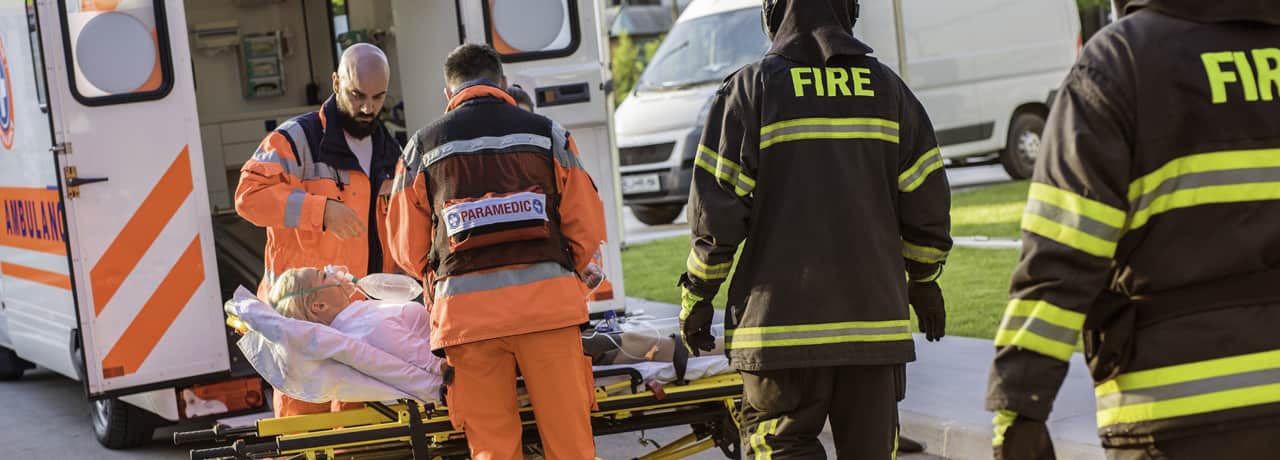August 8, 2019
5g, First Responders, Public Safety

Related Blogs:
Sign up for blog updates
Get innovation delivered to your inbox. Sign up for our blog and stay on top of the very latest from Semtech (formerly Sierra Wireless).
August 8, 2019
5g, First Responders, Public Safety

If it feels like the dawn of an IoT-led transformation in public safety, you are absolutely right. The introduction of both the First Responder Network Authority (FirstNet™) and, over the coming years, faster, lower latency 5G wireless networks will support enhanced and new IoT public safety applications. With these applications, first responders will have the information they need to respond to emergencies faster and more effectively, helping them better protect both the communities they serve and themselves. For example, a key capability of FirstNet is always-on priority pre-emption, which means no matter how congested commercial cellular networks get, public safety voice and data communications will always be supported with FirstNet’s high-speed capabilities.
In addition, as described in detail in a recent Sierra Wireless webinar, Helping First Responders Cut Through the 5G Hype, and an IDC research report, while the rollout of FirstNet will enable new and better first responder communications and IoT applications, the introduction of 5G might end up being just as transformational. 5G will not only provide key incremental advances to existing public safety applications, but also enable groundbreaking new IoT applications.
5G will deliver:
Despite all these new capabilities, it’s important to keep in mind that 5G won’t disrupt existing 4G IoT applications that are already improving public safety agency operations, streamlining workflows, and facilitating access to critical information. In fact, 5G public safety applications will coexist with 4G LTE applications for years to come, enabling a smooth transition from 4G LTE to 5G when 5G becomes available. According to IDC, by 2023 only one-third of all mobile connections will be on a 5G network, so over the next several years, expect many evolutionary improvements in current IoT applications while the revolutionary new capabilities enabled by 5G emerge.
If your agency is currently taking advantage of 4G LTE or Low-Power Wide-Area (LPWA) technology to enhance field communications with smartphones, tablets and laptops, or to deploy applications such as facial recognition, fingerprint sensors, or video file transmission, many of 5G new capabilities will improve the usability of these technologies. For example, 5G will further reduce the power requirements of LPWA applications, while also improving their connectivity, making it easy for data to be transmitted to remote or rural areas or to pass through building walls.
If you are thinking about deploying IoT applications that use LPWA, there’s no need to wait for 5G. You will be able to smoothly integrate 5G’s incremental improvements to LPWA into current IoT applications, usually with just a software upgrade.
In addition to improving connectivity for existing LPWA and other 4G applications, 5G will enable completely new capabilities based on 5G New Radio (NR). Utilizing a different part of the wireless spectrum called mmWave, 5G NR can deliver data rates many times higher than an average cable or fiber broadband connection. mmWave and an improved core network, called 5G Core Network, also enable truly disruptive capabilities, including ultra-high reliability, very low latency and very fast handoffs, supporting new types of fixed and mobile public safety 5G IoT applications related to:
Approaching 5G public safety applications (and FirstNet) the right way requires agencies to stop thinking of these technologies as simply new connectivity options and instead think of them as innovation enablers. This means these agencies should develop a broad, long-term vision for the end-to-end communication capabilities they want to develop in order to support smart city infrastructure, beyond line-of-sight drones, real-time video, augmented reality and other new IoT applications. As part of this effort, agencies should complete a full technical assessment of their short- and long-term IoT application use cases to determine how best to prepare for the move to FirstNet as well as the rollout of 5G.
However, few agencies will have the expertise in-house to understand all of FirstNet’s and 5G’s technical requirements. That’s why finding the right partner to work with is essential. Sierra Wireless has the IoT expertise needed to support this work, having helped to support the development of 4G, FirstNet, 5G and other wireless technologies and standards. Sierra Wireless also has extensive public safety experience. For example, more than 50 percent of the top U.S. police agencies are using Sierra Wireless solutions. This expertise and experience, combined with an industry-leading portfolio of device-to-cloud IoT solutions, positions Sierra Wireless as the perfect partner to help guide public safety agencies through a smooth transition not just to FirstNet, but to 5G as well.
To learn more about the impact of 5G on public safety, watch the webinar, Helping First Responders Cut Through the 5G Hype, and read the IDC report. And remember, always Start with Sierra to understand how your public safety agency can use the IoT to improve the health and safety of your community.
Get innovation delivered to your inbox. Sign up for our blog and stay on top of the very latest from Semtech (formerly Sierra Wireless).